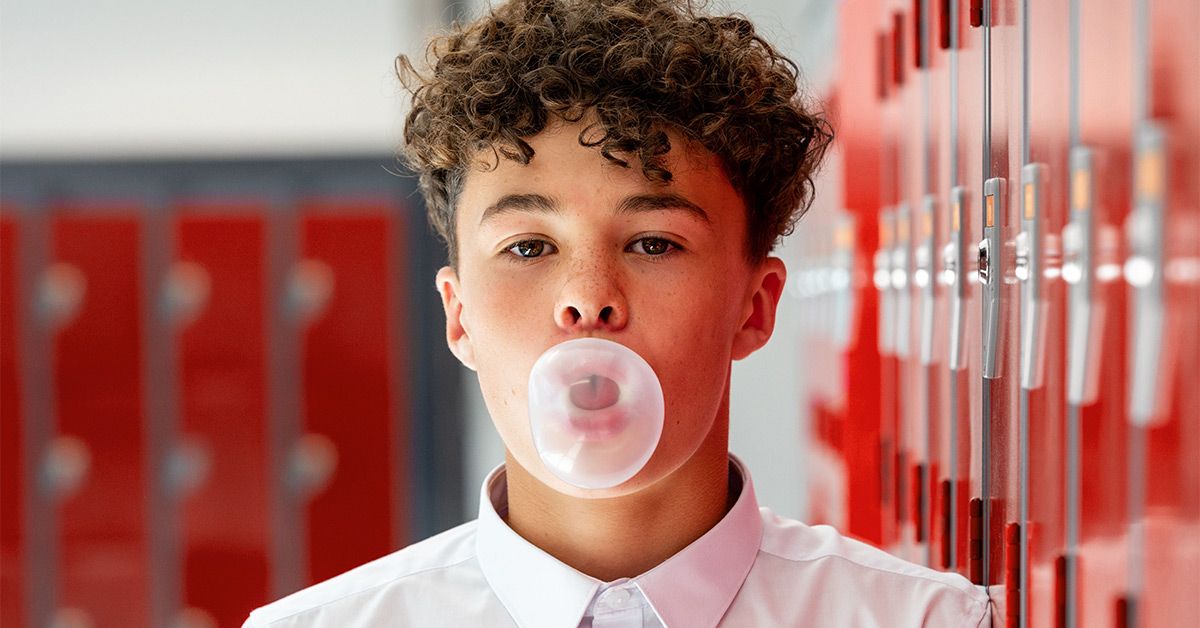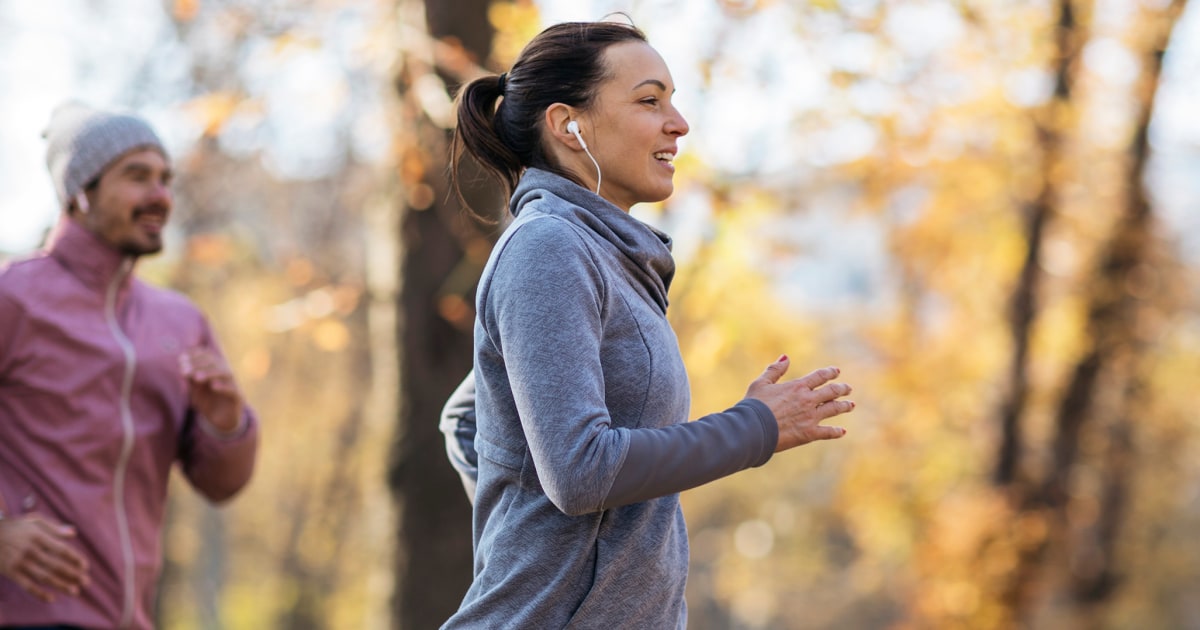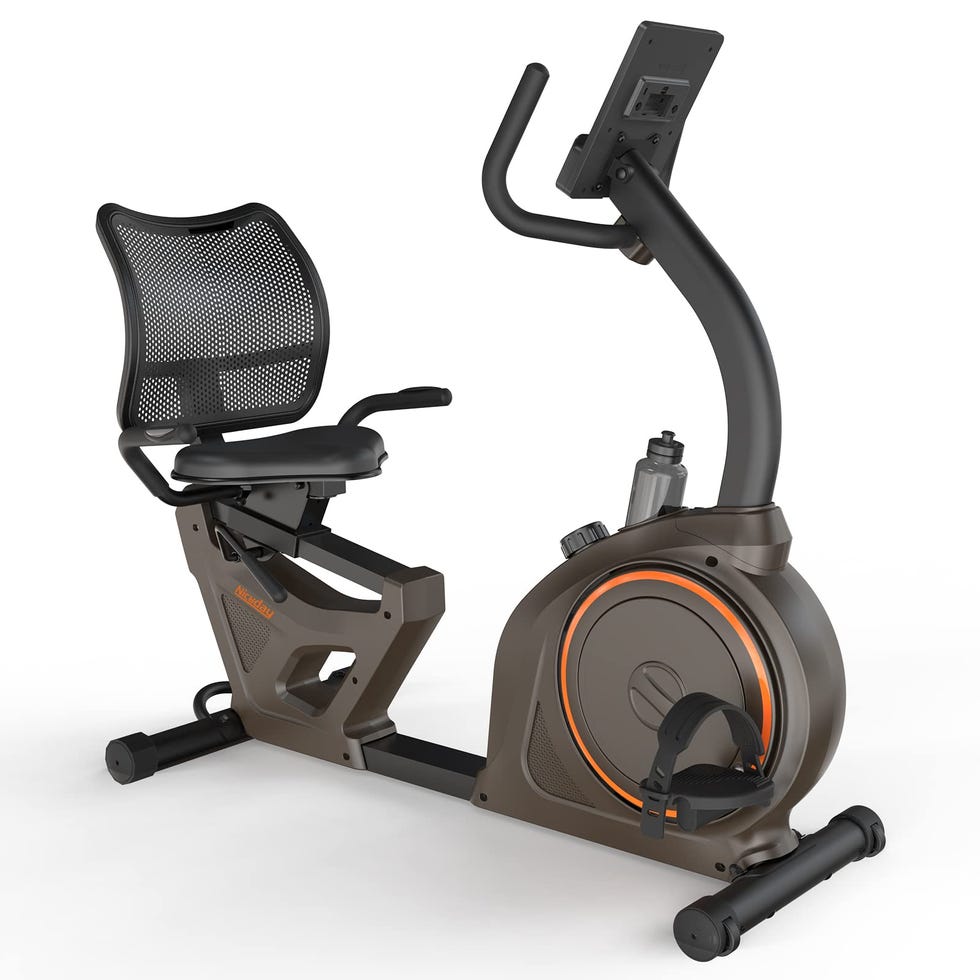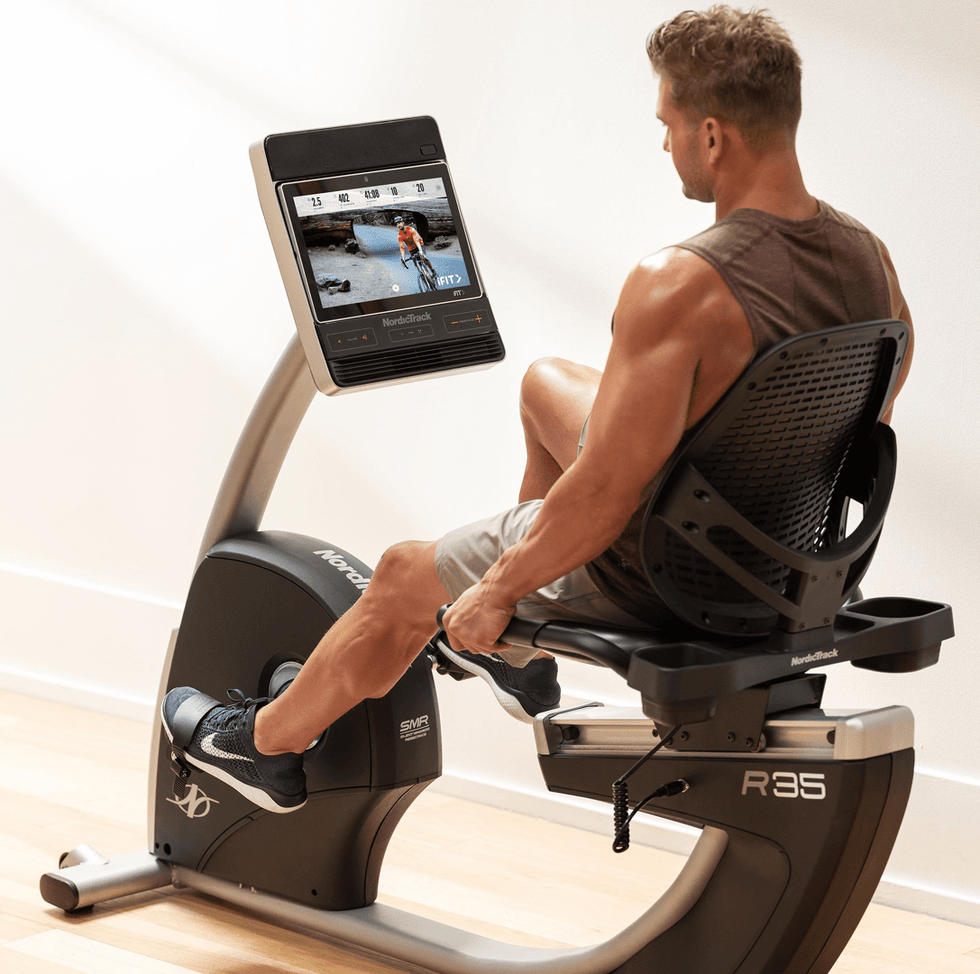Fitness
Can Chewing Facial Fitness Gum Help You Get a More Chiseled Jawline?

- People are chewing ‘Facial Fitness Gum’ in the hope it will give their jaws a more chiseled and defined appearance.
- Chewing gum companies claim it allows them to tighten muscles. However, there’s little evidence to suggest it works.
- Experts say excessive chewing could actually make your jaw appear more square-like and bulky
- Aesthetic options are one way to achieve noticeable results; however, teen boys should remember that their bone structure is likely to change as they age.
Facial fitness gum is the latest in a long line of bizarre beauty trends gaining popularity on social media platforms like TikTok, and companies are capitalizing on the craze.
Brands like Rockjaw, Jawz Gum, and Stronger Gum are claiming their products can help “build the most attractive jawline” and “tone and tighten 57+ facial and neck muscles, anytime, anywhere.”
They claim that chewing these products is akin to a facial workout, as facial fitness gum is tougher than regular gum.
The popularity of these products, particularly among teen boys, is related to the “mewing” trend, which involves placing your tongue on the roof of your mouth to tighten the jaw muscles.
It’s also associated with “looksmaxxing,” the process of “maximizing” your looks so they more closely align with conventional beauty standards.
However, health experts say there’s little evidence to suggest that facial fitness gum actually works.
Dr. Kieren Bong, cosmetic doctor and founder of Essence Medical Cosmetic Clinic, isn’t surprised by these claims but isn’t sold on their effectiveness.
“As a doctor, I find the claim that chewing gum defines the jawline oversimplified. While chewing gum can engage the jaw muscles, any resulting definition is likely minimal and varies between individuals,” he explained.
“It’s unsurprising that this claim is trending, given the public’s fascination with easy, noninvasive beauty solutions promoted on social media,” Bong added. “However, it’s essential to rely on scientifically backed methods for significant changes in appearance rather than quick fixes with limited evidence.”
Likewise, Dr. Joel Kopelman, a facial plastic surgeon at Kopelman Aesthetic Surgery, says these claims should be approached with skepticism.
“Facial aesthetics are complex, and significant changes typically require more than just chewing gum,” he said.
The reasoning behind facial fitness gum?
“The trend is built on the concept that repetitive chewing motions can strengthen the muscles of the jaw and face, particularly the masseter muscles,” Kopelman explained. “Proponents argue that increased muscle tone in this area can create a more chiseled appearance.”
Bong compared it to how other parts of the body become more defined with regular exercise but notes that the impact on overall jawline definition is likely minimal.
Research on the effectiveness of chewing gum for a more defined jawline is limited and inconclusive.
Bong said most scientific studies focus on chewing gum’s general benefits, such as improved concentration, stress relief, and oral health, rather than its impact on facial aesthetics.
“Relying on chewing gum alone is not supported by robust scientific evidence and may lead to unrealistic expectations,” he said.
Kopelman agreed.
“Research in this area is sparse, and most of the claims are anecdotal rather than based on robust scientific data,” he said. “Strengthening the masseter muscles through chewing might result in some hypertrophy, but it’s unlikely to produce the dramatic changes some might expect.”
Ultimately, Kopelman said the primary reason chewing gum is unlikely to yield a more defined jawline is that facial aesthetics are influenced by a combination of bone structure, skin quality, and fat distribution, not just muscle tone.
“While chewing gum might strengthen the masseter muscles, it won’t change the underlying bone structure or significantly reduce facial fat,” he said.
Additionally, he warned that excessive chewing can lead to overdeveloped masseters, which might not be aesthetically desirable and can sometimes lead to a more square or bulky jaw rather than a defined one.
Both experts agreed that chewing gum is unlikely to give you a defined jaw, but what are there more effective ways to achieve this result?
Kopelman said lasting and significant changes in facial aesthetics often require more than simple at-home remedies.
However, there are a few things you can do.
You shouldn’t underestimate the importance of a healthy diet and exercise.
“Maintaining a healthy diet and regular exercise routine can reduce overall body fat, including facial fat, contributing to a more defined jawline,” Kopelman said.
Taking good care of your skin is another way to achieve a tauter appearance. “Proper hydration and skin care routines can improve skin elasticity and firmness, contributing to a more defined look,” says Bong.
These habits may trigger subtle changes. However, it’s difficult to achieve noticeable results without aesthetic interventions.
Kopelman says noninvasive treatments like Ultherapy or radiofrequency can help tighten the skin around the jawline.
Meanwhile, the strategic use of dermal fillers can enhance the jawline by adding volume and definition.
A popular choice is Botox.
“Botox injections can slim the jawline by reducing the size of the masseter muscles, especially in individuals with hypertrophic masseters,” Kopelman explains.
While aesthetic treatments are the most effective option, they are likely not the right choice for teen boys whose features are still developing.
It’s also important to note that the legal age for dermal fillers and Botox in the United States is 18.
Very limited research supports the claim that chewing gum gives you a more chiseled jawline.
In fact, experts say excessive chewing could have the opposite effect, making your jaw appear more square or bulky.
Facial exercises and aesthetic treatments are effective ways to add definition to your jawline. However, it’s important for teen boys to remember that their bone structure is likely to change as they age.

Fitness
How This Self Proclaimed Night Owl Transformed Herself Into A Morning Workout Person

There are two types of athletes: the 4 a.m. warriors, and those who would rather carry dumbbells all day than work out in the morning. If you asked me three months ago, I would have chosen the latter. But now, over halfway through marathon training and several 6 a.m. alarms later, I’ll admit it: I’m a changed person.
As I planned out my marathon training schedule, nothing sounded worse than waking up with the sun to run 16 miles—especially on a Saturday. I’ve learned to not only embrace the challenge but thrive under it. And I have never felt stronger and healthier, both as a runner and human being. I credit the transformation to one small change: a morning workout routine.
Dreading that morning sweat? Here are five benefits to an a.m. workout that will get you out of bed in the morning, plus exactly how to get started, from experts.
Meet the experts: Alexa Noban, CPT, is a fitness coach in New York City. Lindsay Pantaleon, CPT, is a trainer at DOGPOUND. Calyn Brooke, CPT, is a trainer in Arizona. Lisbeth Jennings, PT, DPT, is a physical therapist in New York City. Claire Rifkin, MS, RDN, is a dietician based in New York City.
Benefits Of A Morning Workout Routine
1. It contributes to better sleep quality.
Exercise in general can help improve various aspects related to sleep which can lead to improved wellbeing, increased energy, reduced stress, and simply feeling well-slept, according to a 2024 study in Scientific Reports. Older research looked specifically at early morning exercise and found that it led to a decline in nighttime blood pressure, which contributed to better sleep.
“Morning exercise, especially if done outdoors, helps regulate your circadian rhythms,” says Alexa Noban, CPT, a fitness coach in New York City. “Exposure to morning light tells your body that it’s time to be awake and alert, which sets the stage for better sleep at night. This rhythm makes it easier to fall asleep and stay asleep, leading to improved recovery and overall health.”
2. It boosts your mood.
Nothing feels better than checking off a workout before a busy day ahead. Exercise releases endorphins, the “feel-good” hormone that helps you achieve a post-workout high. Think of it as a natural energy boost sans caffeine. “You’ll feel more energized throughout the day because physical activity increases blood flow, delivering more oxygen and nutrients to your muscles and brain,” says Noban.
3. It could help you to be more productive.
Morning exercise is good for both your body and brain. “You’ll find that you’re sharper and more productive throughout the day because your body has already gotten moving,” says Noban. “Studies have shown that exercise can improve memory and problem-solving skills, so that morning sweat session is also a mental workout.”
4. It may help with weight loss.
Sticking to a workout schedule is key when it comes to fitness gains and weight loss, if that’s what you’re going for. Consistent morning exercise in particular may help you make it a habit, and lead to more overall exercise, according to a 2020 review in Exercise and Sport Sciences Reviews. And that’s a good thing for any goal!
5. It plays a key role in injury prevention.
By getting active early, your muscles will be primed for optimal performance the rest of the day—and that may decrease the risk of injury, says Lindsay Pantaleon, CPT, a trainer at DOGPOUND.
Pro tips for getting started with a.m. workouts
If you’re not a morning person, getting your head off the pillow to start breaking a sweat can be tough. These pro tips can help:
1. Define your “why.”
Whether your motivation is mental or physical, having a clear idea as to why you want to get out of bed in the morning is crucial. “It’s so easy to skip a workout when you face even the smallest inconvenience, like taking time off for vacation, getting bad sleep, or when your gym buddy bails,” says Noban. “If your ‘why’ is strong, it’ll push you through those tough moments and keep you going, even when you really don’t feel like it.”
Personally, my “why” is to feel strong both mentally and physically. I started running during the pandemic, when my mental health was suffering, and running gave me a new passion and purpose. Since then, it has been a source of strength for me and a major mood booster.
2.Put a plan in place.
Choosing a workout in advance helps avoid wasting time figuring out what to do once you’re awake, per Noban (and morning exercisers everywhere). No workout class, no problem. Check out the Women’s Health workout finder for personalized workout and plan recommendations.
Always have a plan as a Women’s Health+ member. Join today.
3. Prepare the night before.
To avoid the hassle of getting your gear ready in the morning, lay everything out the night before. Noban recommends getting workout clothes and sneakers ready, and even a healthy breakfast in the fridge (expert reccos below!).
Trainer Calyn Brooke prepares a cup of coffee to kick off her morning. “I love a good cup of coffee and need that ‘me time’ before I start my workout,” says Brooke. “Years ago, I invested in a coffee maker that I set the night before to brew at a specific time in the morning. Having that hot cup of coffee waiting for me as soon as I get up has been a game-changer for my morning workouts.”
4. Have someone hold you accountable.
Noban suggests making a plan to work out with a friend you don’t want to flake on, join a running club, or enroll in an online fitness company. “If you prefer working out alone, maybe sign up for a class where you have to show up to avoid a fee,” Noban suggests.
5. Never hit the snooze button.
The snooze button is the greatest enemy to a morning workout. To avoid an endless loop of extra sleep, Noban says to put your phone across the room, so you have to get out of bed to turn off your alarm. If you really want to get moving, don’t let yourself press “stop” until you’ve made your bed.
6. Try “habit stacking.”
If you find yourself dragging your feet, attach your workout to a habit you already enjoy. For example, Noban suggests pairing a workout with a podcast, audiobook, or playlist to stay engaged. Planning a reward—like a post-class smoothie—ahead of time can also help, as can simply planning to run through your favorite park rather than on the treadmill.
Frequently Asked Questions
How do you stay safe running outdoors before sunrise?
Meeting a friend in the mornings will not only hold you accountable but provide safety in numbers. If you run alone, make sure to tell someone your route and estimated run time, and bring your phone.
If you listen to music, lower the volume so you can hear your surroundings, or only use one headphone. Physical therapist Lisbeth Jennings, PT, DPT, suggests wearing bright-colored clothing and accessories, and considering a headlamp, light-up vest, and something reflective. Carry a form of ID, and if you wear an Apple Watch or other fitness tracker with the feature, program emergency contacts into it.
Should you eat before or after a morning workout?
Ideally, both. If you’re working out right after you wake up, try to eat something small with easily-digestible carbs to avoid getting an upset stomach, especially if you’re going on a run. A banana fits the bill and you might consider adding a little almond butter, which Claire Rifkin, MS, RDN, says is a source of fat and protein that will help keep you full and sustain your energy throughout your workout. Other suggestions from Rifkin include oatmeal with honey and chia seeds or apple slices with a handful of pistachios.
If you’re awake for one to two hours prior to getting a workout in, you’re safe to eat a normal breakfast. Afterwards, prepare a balanced meal with protein, carbs, and fats to refuel.
How do you ensure your morning workout doesn’t make you tired the rest of the day?
Make sure you’re getting roughly eight hours of sleep the night before (and ideally every night). Hydrate well and ensure your dinner has a mix of protein, carbs, and fat. If you aren’t a morning person, Jennings recommends gradually setting your alarm earlier over a few days to warm up to waking up early. And remember to fuel before and afterwards to replenish your energy stores for the day.
Morning Workout Inspo
“I personally think the best type of exercise to do in the mornings is the one that you’re most likely to get up and feel excited to do,” says Jennings. “If the thought of a run motivates you to get out of bed, schedule your runs in the morning.” If you’d rather lift or do a class, do that.
That said, if you’re looking for more direction, Pantaleon recommends a functional strength workout since these movements mimic the ones you’ll do throughout your day, helping to warm up your muscles and joints. Grab a pair of dumbbells or kettlbells and try this total-body routine she curated.
Instructions: Compete 3 to 4 sets of 8 to 12 reps of each of the following exercises. Choose weights ranging from 10 to 30 pounds based on your experience. If you’re new to exercise, try the moves with just your bodyweight first, and consider consulting with a personal trainer to master form.
Goblet Squat
Suitcase Deadlift
Farmer’s Carry
Overhead Press
Fitness
These Recumbent Exercise Bikes Are Easy on Your Joints

Versatile and effective, stationary exercise bikes make a fantastic addition to any home gym. That’s because they provide a solid low-impact workout while boosting cardiovascular fitness. Recumbent bikes are a type of stationary bike that puts you in a more comfortable reclined position to support your back as you exercise. This position distributes the rider’s weight more evenly, in turn providing better support for your back and reducing strain on your neck and wrists.
Seniors, those just getting started on their fitness journey and individuals who have knee and joint pain may especially appreciate recumbent bikes as a way to stay active. Our fitness and engineering experts in the Good Housekeeping Institute have evaluated exercise bikes for over a decade, looking at all different options at a variety of price points to help you find the best solution for your fitness needs. When researching recumbent exercise bikes, we looked for highly rated options with adjustable features, a wide range of resistance, a clear display and durable materials. Our top picks offer something for every rider, whether you’re new to fitness or a seasoned pro.
“/>
Stefani (she/her) is a registered dietitian, a NASM-certified personal trainer and the director of the Good Housekeeping Institute Nutrition Lab, where she handles all nutrition-related content, testing and evaluation. She holds a bachelor’s degree in nutritional sciences from Pennsylvania State University and a master’s degree in clinical nutrition from NYU. She is also Good Housekeeping’s on-staff fitness and exercise expert. Stefani is dedicated to providing readers with evidence-based content to encourage informed food choices and healthy living. She is an avid CrossFitter and a passionate home cook who loves spending time with her big fit Greek family.
Watch Next

Advertisement – Continue Reading Below
Advertisement – Continue Reading Below
Advertisement – Continue Reading Below
Fitness
Turn your walk into a HIIT workout with his 31-day plan

Welcome to Start TODAY. Sign up for our Start TODAY newsletter to receive daily inspiration sent to your inbox — and join us on Instagram!
It is officially autumn! Our schedules are jam-packed, the holiday season is fast approaching and fall foliage makes outdoor walks even more appealing. So, what better time to commit to a walking plan that will allow you to get those steps in while also cutting your workout time in half? Enter our HIIT walking challenge!This month we’re turning our daily walks into high-intensity interval training — or HIIT — walks. HIIT workouts alternate between short, but intense, bursts of exercise (where you go all out for a period of time) and less intense active recovery. This style of training speeds up the metabolism, builds muscle, improves heart health, burns fat and increases endurance. Plus, you not only burn more calories while you’re exercising, but after the workout as well, since HIIT creates an “after-burn effect” allowing you to burn more calories at rest.
-

 News1 week ago
News1 week agoToplines: September 2024 Inquirer/Times/Siena Poll of Pennsylvania Registered Voters
-

 Business1 week ago
Business1 week agoVideo: Federal Reserve Cuts Interest Rates for the First Time in Four Years
-

 News7 days ago
News7 days agoVideo: Who Are the Black Swing Voters?
-

 Politics1 week ago
Politics1 week agoDem lawmakers push bill to restore funding to UN agency with alleged ties to Hamas: 'So necessary'
-

 Politics1 week ago
Politics1 week ago'I've never seen this': Top Republican details level of Secret Service 'lack of cooperation'
-

 News1 week ago
News1 week agoElection 2024 Polls: Florida
-

 World1 week ago
World1 week agoCritics slam landmark EU competitiveness report as 'one-sided'
-

 Finance1 week ago
Finance1 week agoThis ETF uses ChatGPT to invest like Warren Buffett





























